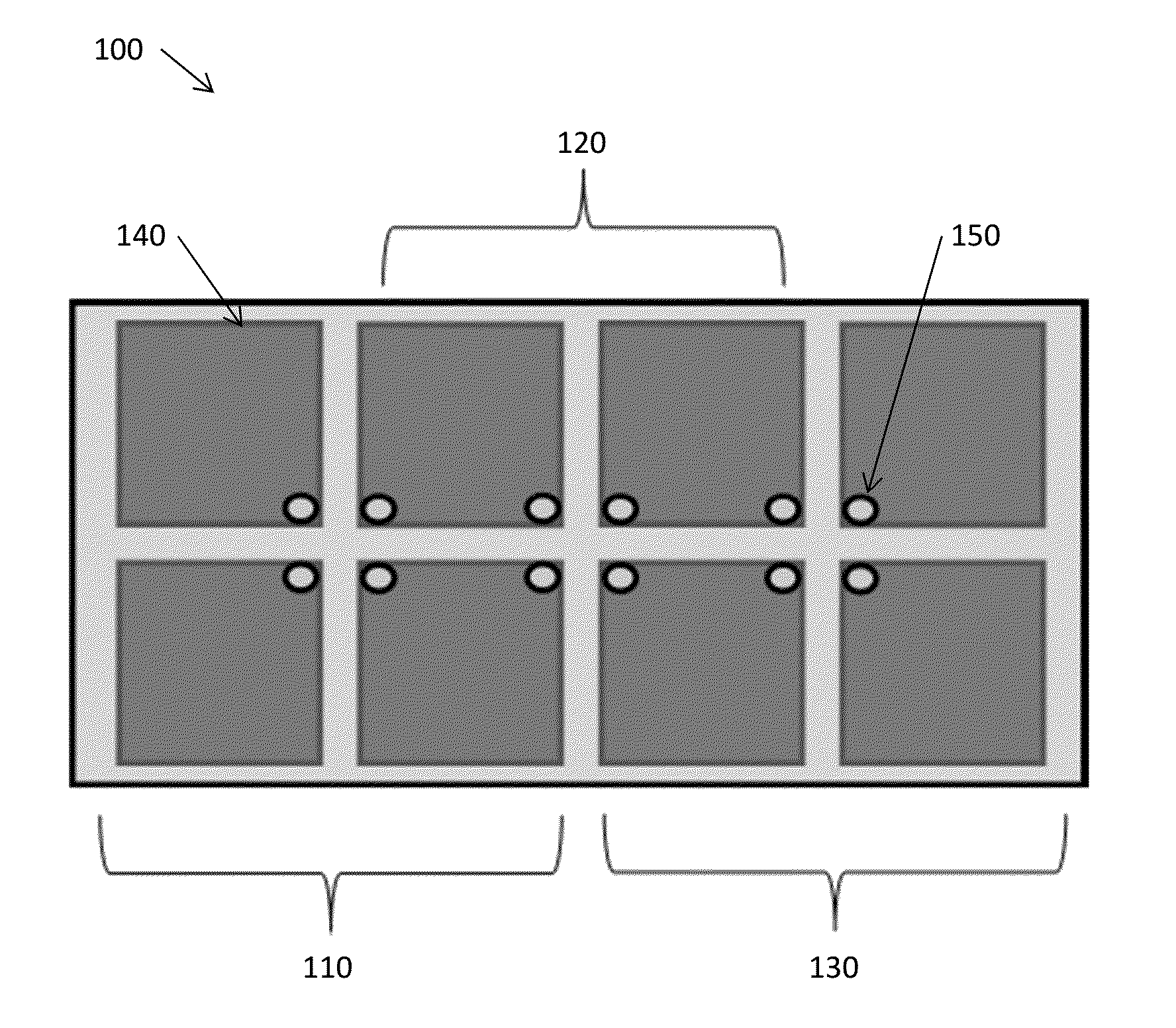Shared aperture antenna array
a technology of aperture antenna array and aperture antenna, which is applied in the direction of polarised antenna unit combination, using reradiation, instruments, etc., can solve the problem that the physical size of the antenna cannot be greatly reduced to achieve any noticeable increase in sampling density, and achieve the effect of increasing sampling density
- Summary
- Abstract
- Description
- Claims
- Application Information
AI Technical Summary
Benefits of technology
Problems solved by technology
Method used
Image
Examples
Embodiment Construction
[0023]The present invention describes an array of antennas that shares components or elements of neighboring antennas to create additional antennas. The shared aperture array creates additional antenna elements within an array of broadband planar dipole antennas, allowing for increased array sampling and pixel density than current antenna array designs. The shared aperture array can achieve pixel sampling distances much smaller than one-half wavelength with a single array of antennas. The sharing of elements of neighboring antennas to create additional antennas reduces the physical size of the arrays by a factor of two, allows for fully polarimetric data sets with a single array, increases the physical sampling—reducing pixel sampling in the array—to one-twelfth of a wavelength, and enables imaging systems with reduced weight.
[0024]In one embodiment, the present invention discloses an array of broadband planar dipoles and maintains desirable circular polarization properties of trans...
PUM
 Login to View More
Login to View More Abstract
Description
Claims
Application Information
 Login to View More
Login to View More - R&D
- Intellectual Property
- Life Sciences
- Materials
- Tech Scout
- Unparalleled Data Quality
- Higher Quality Content
- 60% Fewer Hallucinations
Browse by: Latest US Patents, China's latest patents, Technical Efficacy Thesaurus, Application Domain, Technology Topic, Popular Technical Reports.
© 2025 PatSnap. All rights reserved.Legal|Privacy policy|Modern Slavery Act Transparency Statement|Sitemap|About US| Contact US: help@patsnap.com



